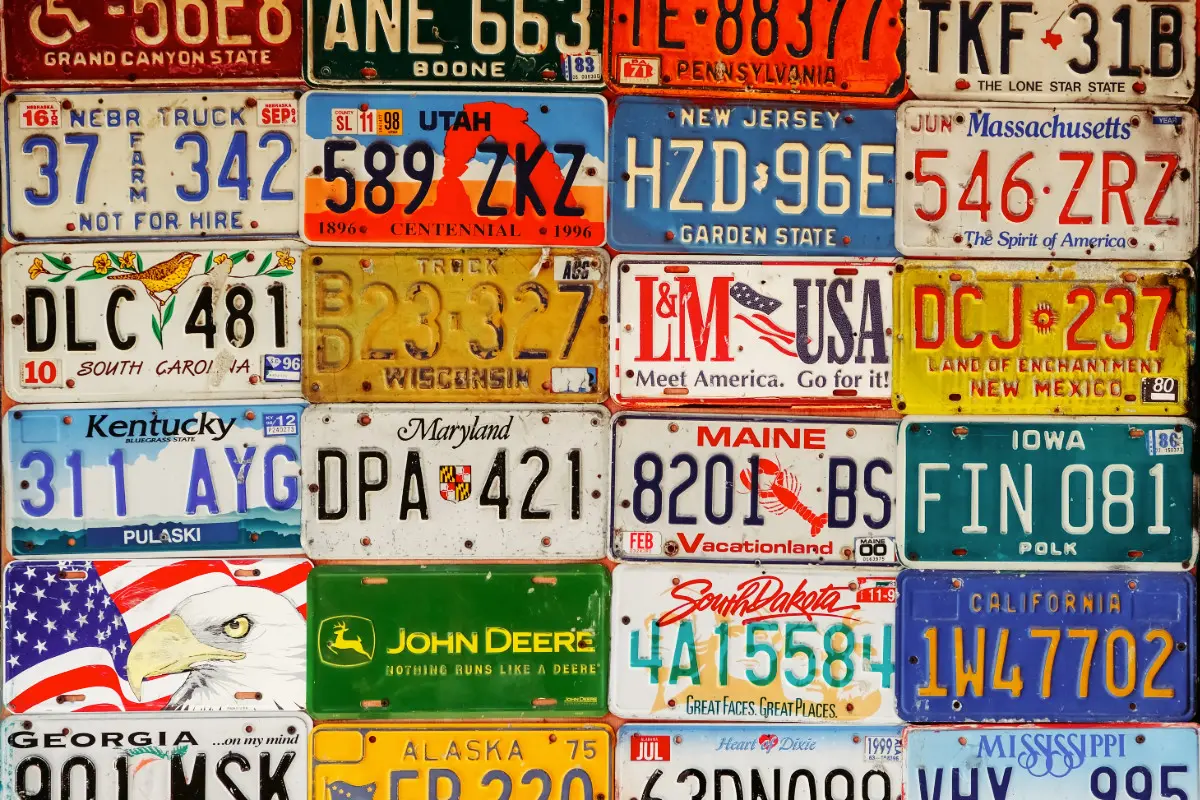The Fascinating History of the License Plate
Every car has a license plate, but how much do you really know about them? Learn more about the fascinating license plate history.

There are approximately 291 million registered automobiles in the United States, and each one has its own unique license plate. But would you believe that was not always the case?
That’s right, at the beginning of license plate history – also called vehicle registration plates – they were not required when cars were first invented. Fast-forward to today, and there are more different kinds of plates than you might guess – state-issued, personalized vanity, and disabled, just to name a very few. Every state has its own design.
But how did we get here from there?
Read on to learn more about the fascinating history of license plates in America.
The First License Plates
The modern automobile was invented in 1886 and on August 14, 1893, France enacted the Paris Police Ordinance, making France the first nation to issue a vehicle registration plate.
Automobiles first became widely available in America in 1901. Between 1900 and 1908, car production skyrocketed by a factor of 15, increasing from just 4192 in 1900 to 63,500 in 1908.
This exploding popularity is why in 1901, New York became the first state to require owners to register their motor vehicles with the state.
Governor Benjamin Odell Jr. signed the bill on April 25, 1901, making it a law that every motorcycle or automobile had to display “the separate initials of the owner’s name placed upon the back thereof in a conspicuous place, the letters forming such initials to be at least three inches in height.”
The first registered license plate in America was given to George F. Chamberlain. That first year, over 1500 registrations were recorded.
But unlike the registration plates of today, compliance was left up to the individual owners. There were absolutely no restrictions on style, color, or even materials.
In practice, this meant that some car owners took ordinary house letters, put them on wood, leather, or metal plaques, and mounted them on the vehicle. Other owners simply painted their initials directly on the vehicle.
The Move to State-Issued Plates
As you might expect, “initials registration” became confusing as the number of cars and drivers on the road increased. There were way too many automobile owners who shared the same initials. A new solution was needed.
On May 15, 1903, the New York state legislature enacted a new law that assigned every registered owner a unique number that had to be displayed on the rear of their automobile. Strangely, though, it was still left to the individual owner as to how they would comply. New York drivers continue to provide their own license plates until 1910.
This is why Massachusetts was the first state to officially distribute government-issued plates. In 1903, Frederick Tudor was given license plate number “1”. Almost 120 years later, the family still maintains license plate history by keeping an active registration on that same 1 plate.
By 1918, every US state was issuing its own license plates.
Originally, plates were supposed to be semi-permanent for the life of the vehicle. But by 1920, drivers were required to renew their registration and obtain new state plates every year.
States tried different ways to make the plates for the given year. A typical plate would have the registration number in the center in large numbers, while smaller lettering on the sides would give the year the registration was valid and the state name. Some states would even change the color of the license plate every year, so police could easily identify expired tags.
Today, most jurisdictions issue new registration stickers every year that can be placed on the existing license plate, instead of issuing new plates. License plates are now stranded by all 50 states plus the District of Columbia, the five US territories, and individual Native American tribes.
License Plate Numbers
The first state-issued license plates in Massachusetts were made of porcelain-covered iron. They had cobalt-blue backgrounds with the words “Mass Automobile Register” and the license number in white.
Interestingly, the size of that first plate design changed over time, getting wider as the registration numbers increased from the tens into the hundreds and thousands.
Today, most passenger vehicles will have license plates with six or seven characters, although some states allow up to eight characters for personalized vanity plates.
There is no “standard” for issuing registration numbers. Some states use numbers only, while others allow a combination of digits and numbers. Some jurisdictions are encoded to show when the license plate expires and/or where it was issued.
Of special interest, most states exclude the letters I, O, and Q because they are too easily confused with the numbers 0 and 1.
Discover License Plate History for Yourself
License plate history is fascinating because every plate reveals a little bit about the culture of the state or territory that issued it. Quite literally, they are a slice of Americana.
The next time you are on a road trip, try entertaining yourself and your family by seeing how many different kinds of license plates you can find on the vehicles around you. This classic game is both fun and educational.

